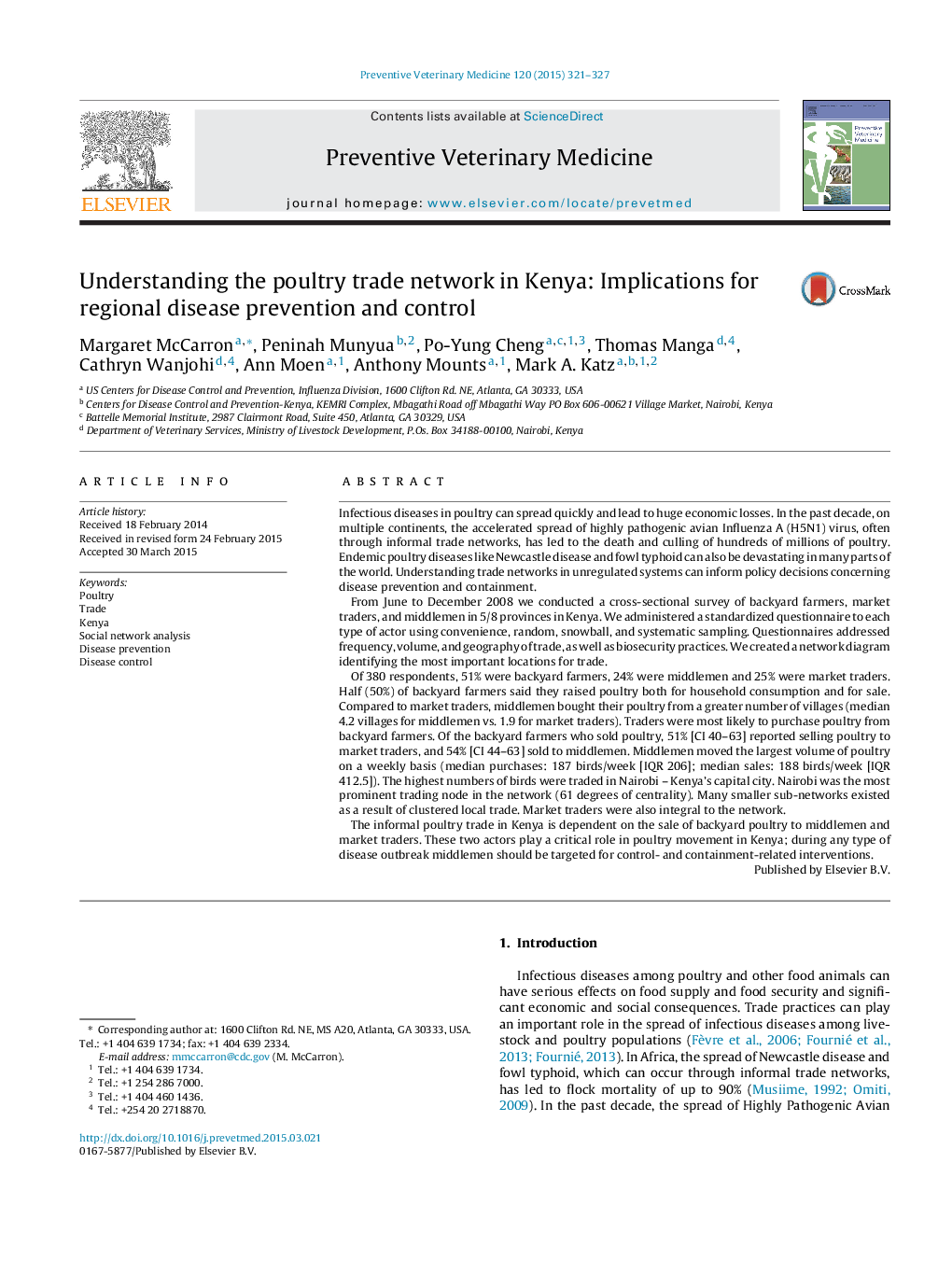| کد مقاله | کد نشریه | سال انتشار | مقاله انگلیسی | نسخه تمام متن |
|---|---|---|---|---|
| 2452377 | 1554169 | 2015 | 7 صفحه PDF | دانلود رایگان |
• The trade network in Kenya is unregulated and involves several key players in poultry movement.
• The unregulated system leaves poultry stock vulnerable to the spread of avian diseases.
• Middlemen are a key player in this system, and an important target for interventions.
• The trade network is highly clustered with large hubs that link small, tight smaller clusters.
Infectious diseases in poultry can spread quickly and lead to huge economic losses. In the past decade, on multiple continents, the accelerated spread of highly pathogenic avian Influenza A (H5N1) virus, often through informal trade networks, has led to the death and culling of hundreds of millions of poultry. Endemic poultry diseases like Newcastle disease and fowl typhoid can also be devastating in many parts of the world. Understanding trade networks in unregulated systems can inform policy decisions concerning disease prevention and containment.From June to December 2008 we conducted a cross-sectional survey of backyard farmers, market traders, and middlemen in 5/8 provinces in Kenya. We administered a standardized questionnaire to each type of actor using convenience, random, snowball, and systematic sampling. Questionnaires addressed frequency, volume, and geography of trade, as well as biosecurity practices. We created a network diagram identifying the most important locations for trade.Of 380 respondents, 51% were backyard farmers, 24% were middlemen and 25% were market traders. Half (50%) of backyard farmers said they raised poultry both for household consumption and for sale. Compared to market traders, middlemen bought their poultry from a greater number of villages (median 4.2 villages for middlemen vs. 1.9 for market traders). Traders were most likely to purchase poultry from backyard farmers. Of the backyard farmers who sold poultry, 51% [CI 40–63] reported selling poultry to market traders, and 54% [CI 44–63] sold to middlemen. Middlemen moved the largest volume of poultry on a weekly basis (median purchases: 187 birds/week [IQR 206]; median sales: 188 birds/week [IQR 412.5]). The highest numbers of birds were traded in Nairobi – Kenya's capital city. Nairobi was the most prominent trading node in the network (61 degrees of centrality). Many smaller sub-networks existed as a result of clustered local trade. Market traders were also integral to the network.The informal poultry trade in Kenya is dependent on the sale of backyard poultry to middlemen and market traders. These two actors play a critical role in poultry movement in Kenya; during any type of disease outbreak middlemen should be targeted for control- and containment-related interventions.
Journal: Preventive Veterinary Medicine - Volume 120, Issues 3–4, 1 July 2015, Pages 321–327
